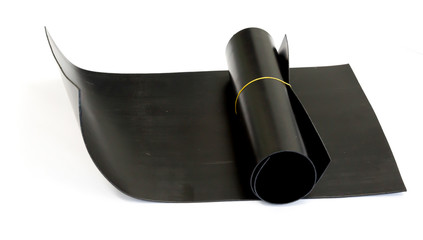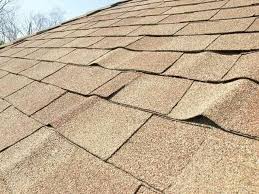Are you tired of dealing with water damage, mold, and mildew on your roof? It’s time to consider a game-changer in the roofing industry: synthetic underlayment for roof. This comprehensive guide will provide you with everything you need to know about this modern alternative to traditional felt, and how it can revolutionize the way you protect your home from the elements.
Key Takeaways
- Synthetic roof underlayment offers enhanced durability, weather protection and easy installation.
- Consider climate, location, roof design and materials when selecting synthetic underlayment for optimal performance.
- Adopt proper installation techniques to ensure breathability and moisture control with fastening methods such as capped nails.
Understanding Synthetic Roof Underlayment

Synthetic roof underlayment is a cutting-edge alternative to traditional roofing felt, offering improved durability and weather protection, often preferred by roofing contractors. This innovative material is typically composed of woven or spun polyethylene or polypropylene, making it suitable for sloped roofs. While felt underlayment has its uses, it should not be left exposed for an extended period as it may dry out or leach oils in higher temperatures, potentially diminishing its ability to act as a moisture barrier.
When choosing between synthetic underlayment and stick roof underlayment, keep in mind factors like climate and location, roof design and materials, and budget and cost-effectiveness. A thorough evaluation of these elements will guide you towards the underlayment best fitting your unique roofing needs.
Advantages of Synthetic Roofing Underlayment
Synthetic roofing underlayment boasts several advantages over traditional felt, including increased durability, enhanced weather protection, and simplified installation. Due to its longer lifespan, synthetic underlayment has become a popular choice among many roofing products, including many synthetics.
Additionally, synthetic underlayment’s lightweight and flexible nature makes it easier to handle and install, ultimately saving both time and effort for roofing contractors.
Longer Lifespan
One of the most appealing features of synthetic underlayment is its impressive longevity. With warranties ranging from 25 to 50 years, synthetic underlayment outlasts traditional felt by a significant margin.
For example, Sharkskin Ultra® offers a 50-year warranty, providing homeowners with peace of mind knowing their roof is well-protected for an extended period of time.

Enhanced Weather Protection
When it comes to weather protection, synthetic underlayment truly shines. Its superior durability and resistance to water damage, mold, and mildew make it a top choice for roofing contractors looking to safeguard homes against the elements, especially when installing asphalt shingles on a roof deck. As a roofing contractor, it’s essential to consider using this underlayment for optimal results.
Moreover, the low perm rating of synthetic underlayment makes it less permeable than felt, amplifying its defence against moisture intrusion. Nonetheless, when using synthetic underlayment with a low perm rating, maintaining appropriate attic ventilation and moisture control is mandatory to avoid potential problems.
Ease of Installation
Synthetic underlayment offers several advantages over felt:
- Lighter weight
- Increased flexibility
- Easy installation
- Saves time for roofing contractors
- Reduces the risk of installation errors that could compromise performance.
Furthermore, synthetic underlayment’s compatibility with a variety of roofing materials adds to its versatility, making it a popular choice for both residential and commercial projects.
Disadvantages of Synthetic Roofing Underlayment
Despite its numerous benefits, synthetic underlayment does have some drawbacks. One notable downside is its higher cost compared to felt underlayment. Additionally, it may not be compatible with certain roofing materials, potentially limiting its use in some projects.
However, when weighing the advantages of synthetic underlayment against its disadvantages, many homeowners and contractors find that the benefits of enhanced durability and weather protection outweigh the higher upfront cost.
Factors to Consider When Choosing Synthetic Underlayment
An informed decision on synthetic underlayment selection requires consideration of various factors like:
- Climate
- Roof design
- Materials
- Budget
Each element holds significant relevance in determining the appropriateness of synthetic underlayment for a specific roofing project.
By carefully evaluating these factors, you can ensure that you choose the right underlayment to provide optimal protection for your home.
Climate and Location
Local climate and weather conditions play a pivotal role in the performance of synthetic underlayment. For instance, temperature, humidity, and precipitation levels in the area can influence the underlayment’s durability and effectiveness in protecting your home.
This is why considering the climate and location during the selection of synthetic underlayment is vital to guarantee optimal performance and longevity.
Roof Design and Materials
Compatibility is key when selecting synthetic underlayment for your roofing project. By considering factors such as the type of roof, slope, and materials used, you can ensure that the chosen synthetic underlayment will work seamlessly with your specific roofing system.

For example, some types of synthetic underlayment may not be compatible with certain roofing materials, potentially limiting its use in some projects. By taking the time to evaluate your roof design and materials, you can make an informed decision that will lead to a successful roofing project.
Budget and Cost Effectiveness
Budget and cost effectiveness are essential components to consider when selecting synthetic underlayment. While synthetic underlayment typically comes with a higher upfront cost compared to felt, its increased durability and weather protection may justify the price difference in the long run.
In the end, balancing the benefits of synthetic underlayment against its cost is vital to determine the most suitable option for your budget and specific roofing requirements.
Popular Brands and Types of Synthetic Underlayment
Several popular brands and types of synthetic underlayment on the market include Sharkskin Comp®, Sharkskin Ultra®, and Sharkskin Ultra SA®. These brands have gained recognition within the roofing industry for their superior performance and durability, as they are specifically manufactured to meet the industry’s high standards.
By familiarizing yourself with these popular brands and types, you can make an informed decision when choosing the right synthetic underlayment for your roofing project.
Proper Installation Techniques and Best Practices

Adopting proper installation techniques and best practices is key to guaranteeing the best performance of synthetic underlayment. Following accurate fastening methods and maintaining proper moisture control can effectively shield your home from potential water damage and other roofing problems.
Let’s delve into the specifics of these essential installation aspects.
Fastening Methods
When installing synthetic underlayment, using capped nails is recommended to ensure a secure installation. These specialized nails provide enhanced grip and stability, preventing the underlayment from shifting or becoming damaged during installation.
Always follow the manufacturer’s instructions for proper fastening techniques to guarantee the best results and maximum protection for your roof.
Ventilation and Moisture Control
Proper attic ventilation and moisture control are vital when using synthetic underlayment with a low perm rating. A well-designed ventilation system that circulates air through the attic can help remove excess moisture, preventing potential issues such as mold growth and water damage.
Additionally, utilizing breathable synthetic underlayment can further mitigate moisture problems, ensuring a healthy and well-protected roof.
Synthetic Underlayment vs. Peel and Stick Roofing
While synthetic underlayment is designed to protect roofs from water and ice damage, peel and stick roofing serves a different purpose. This self-adhering or ice and water underlayment is used to cover overhangs, valleys, and wall intersections, providing an additional layer of protection in vulnerable areas. Peel and stick roofing is particularly beneficial for roofs with low slopes and in climates that experience heavy precipitation, strong winds, and snowfall.
In high-risk areas, using both synthetic underlayment and peel and stick roofing can provide optimal roof protection. By combining these two types of underlayment, you can ensure that your entire roof is well-protected against the elements, minimizing the risk of water penetration and subsequent damage to your roofing system.
Make the Smart Choice With Synthetic Underlayment
Synthetic underlayment offers numerous benefits over traditional felt, including increased durability, enhanced weather protection, and ease of installation. By carefully considering factors such as climate, roof design, materials, and budget, you can make an informed decision to choose the best synthetic underlayment for your specific roofing needs.
Don’t let water damage, mold, and mildew compromise the integrity of your roof. Invest in synthetic underlayment and embrace the future of roofing protection. Call us today for any questions or to set up an appointment.
Frequently Asked Questions
Is synthetic roofing underlayment better?
Synthetic roofing underlayment offers better durability, tear strength and protection from UV and moisture than felt, making it a great choice especially in areas exposed to boot traffic.
What are the pros and cons of synthetic underlayment?
Synthetic underlayment is a great choice for DIY projects due to its durability and ease of installation, but may not be as robust in areas with extreme temperatures or high winds and can be more expensive than felt.
How much does synthetic roof underlayment cost?
Synthetic roof underlayment costs an average of $0.20 – $0.30 per square foot.
What is synthetic underlayment?
Synthetic underlayment is a layer of laminated plastic material that provides an extra layer of protection to the roof system by going over the roof deck.
How long does synthetic underlayment typically last?
Synthetic underlayment typically lasts between 25-50 years, offering a longer lifespan than felt.



